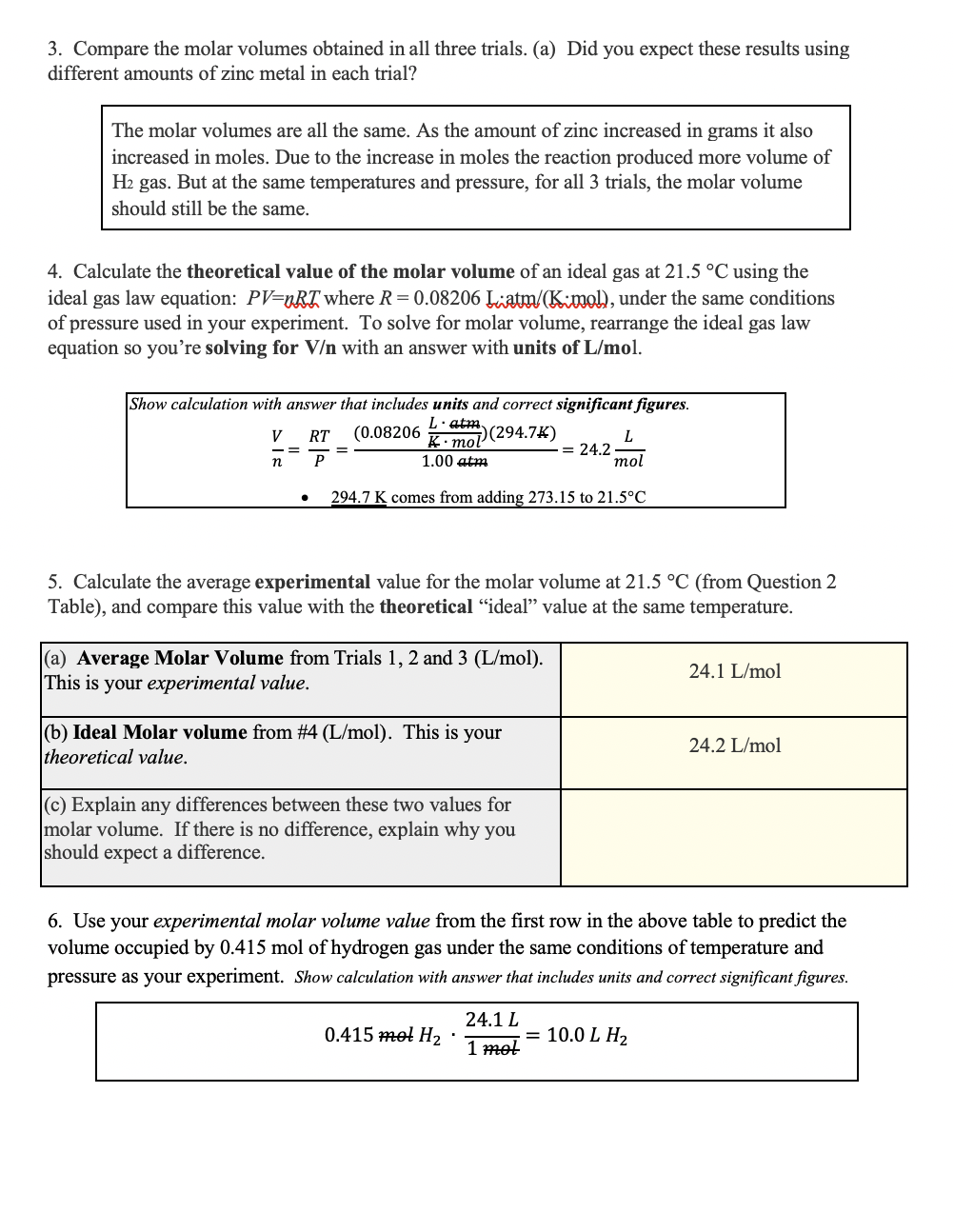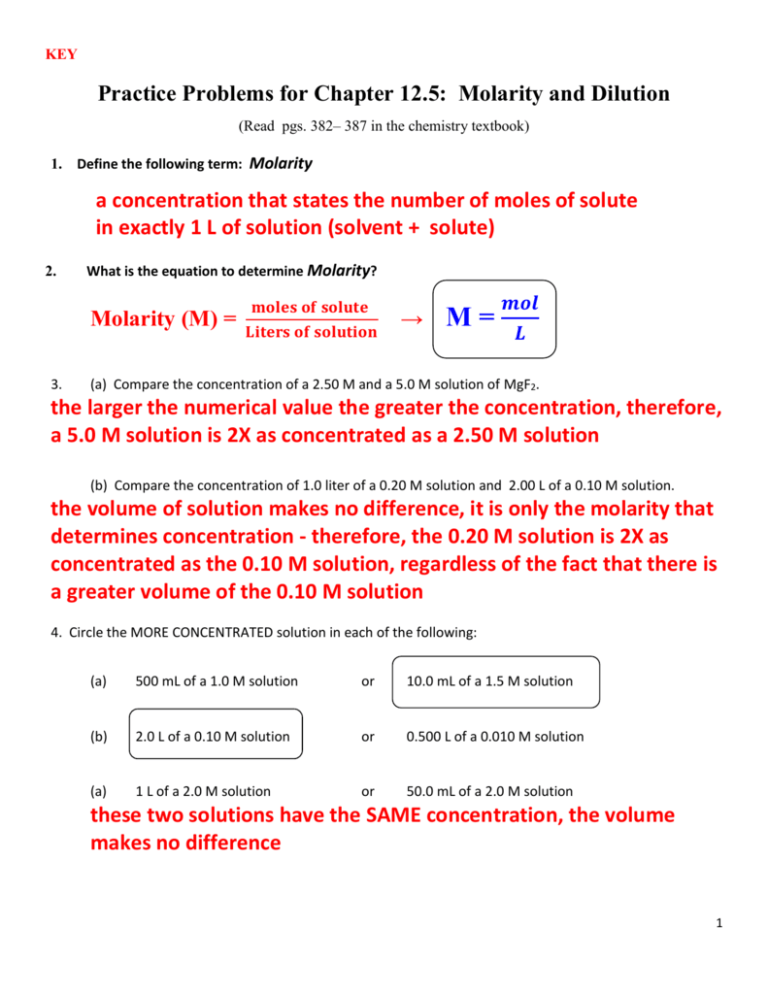Explain Any Differences Between These Two Values for Molar Volume
If there is no difference explain why you should expect a difference. For a solid or a liquid.

Solved Need Hello With Question 5 Part C Attached Is All Of Chegg Com
Graphite has a molar volume of 533 cm3 mol-1 and diamond has a molar volume of 342 cm3 mol-1.

. Much depends on how you measured g. The absolute value of the difference between the two values the error is your experimental error. Regardless of their chemical identity the ideal gas law applies to all ideal gases.
Suppose you obtained a value of 995 ms2 for g from a second experiment. To compare this with the result of 102 ms2 from the first experiment you would calculate the percent difference to be. Can graphite be converted spontaneously into diamond at 25 oC and 1 atm.
The heat capacity at constant pressure is. For example at 273 K and 1 atmosphere pressure the density of helium is 01785 g dm-3. Where V m is the molar volume of gas R is universal gas constant T is the temperature of real gas P is the pressure.
It is a fairly simple sum to work out what 1 mole of helium He would occupy. However it is a state equation that only applies in particular circumstances. P an 2 V 2V m b nRT.
1 mole of He weighs 4 g and would occupy 4. The kinetic theory assumes that gas particles occupy a negligible fraction of the total volume of the gas. Less accurate than molecular mass.
View Homework Help - Lab 5 Molar Volume_ Assignment Sum2015 from CHM 113 at Arizona State University. The standard free energy of formation of carbon in graphite form is 000 kJmol-1 and in diamond form 2900 kJ mol-1. Your eye should be at the same level as the bottom of the meniscus.
Manipulation Calculate the expected volume for 1 mole of an ideal gas under atmospheric pressure and you room temperature conditions. Almost any explanation must be based on differences in hydrogen bonding patterns with the two sub- stances. Longer answer in addition to my short answer.
In relation to this point the 4 values of Q-. Figure 1 shows plots of Z over a large pressure range for several common gases. Glycine and acetamide differ in formula only by an oxygen atom yet glycine which has the larger molecular weight has the smaller molar volume at pH 55 due to electrostriction.
All of those plus g does vary a little on the Earths surface. The values shown on each line plot are normalized. Thus the advantage of the cyclic structure is more easily lost on insertion of a cyclic -CH group.
Error experimental value - accepted value The difference is usually. And V 2 the final volume of a gas n 2 the final moles of that gas. This permits you to measure the volume of the gases in the tube at room pressure.
Molarity is the ratio of moles to volume of the solution molL while molality is the ratio of moles to the mass of the solvent molkg. Molarity and molality are both measures of the concentration of a chemical solution. They all have a value of 1 at 25 C.
Cyclohexanol has a 4 value of 1035cm3mol whereas l-hexanol has 11187crnmol. Ideal gas behavior is therefore indicated when this ratio is equal to 1 and any deviation from 1 is an indication of non-ideal behavior. Notice that CO2 has a sizeable negative slope and a vertical midpoint.
Δ U Q W. If V 1 the initial volume of a gas n 1 the initial moles of that gas. 6 percent difference.
The first assumption works at pressures close to 1 atm. It also assumes that the force of attraction between gas molecules is zero. C V U T V.
The general relationship between pressure and volume is an inversely proportional one. A standard molar volume shown in blue is chosen to have a value of 0 at 100 K. Manipulation Using the expected and the measured volumes of the carbon dioxide calculate the percent yield of the experiment.
There should be either heat Q or work W affecting the system. Explain any differences between these two values for molar volume. If the molar amount is doubled the volume is doubled.
Most of the time it doesnt matter which unit of concentration you use. This graph compares how the molar volume changes with temperature for three different gases NH3 CO2 and N2. Mass of 1 mole of oxygen is 159994 grams.
V 4 3 p r 3. E1 E2. Van der Waals realized that two of the assumptions of the kinetic molecular theory were questionable.
The heat capacity at constant volume is given by. Read the gas volume. PV nRT where R 008206 L.
Molecular mass of Ca OH2 74 atomic mass units. Calculate the theoretical value of the molar volume of an ideal gas at 215 C using the ideal gas law equation. These were some important difference between molecular mass and molar mass.
You can see this by evaluating the ideal gas equation. That means that 01785 g of helium occupies 1 dm3at stp. Pressure shows that gases can exhibit significant deviations from the.
Molar Volume of an Ideal Gas Remember to report data and calculated results to the correct number. Record the volume of the gas as precisely as you can. P stands for pressure V stands for volume n stands for the number of moles of gas R stands for the gas constant and T stands for absolute temperature.
Oil companies actually use the variation to find likely oil fields. Therefore the molar mass 159994 gmol. A graph of the compressibility factor Z vs.
Volume of real gas V m b Pressure of real gas P an 2 V 2 Then we can get the real gas law by applying these modified components to the ideal gas law as follows. Accurate to use in higher calculations. This means that if everything else remains the same when the volume increases the pressure decreases and vice versa.
So according to the law V n where T and P constant or V An where A is the proportionality constant or Vn A. Recall that U refers to internal energy.

Question Video Recalling The Molar Volume Of A Gas At Rtp Nagwa

Avogadros Law Avogadro S Law Chemistry Classroom Thermodynamics

Comments
Post a Comment